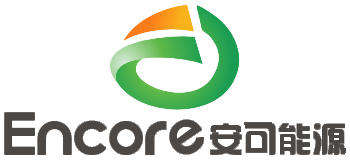- English
- Español
- Português
- русский
- Français
- 日本語
- Deutsch
- tiếng Việt
- Italiano
- Nederlands
- ภาษาไทย
- Polski
- 한국어
- Svenska
- magyar
- Malay
- বাংলা ভাষার
- Dansk
- Suomi
- हिन्दी
- Pilipino
- Türkçe
- Gaeilge
- العربية
- Indonesia
- Norsk
- تمل
- český
- ελληνικά
- український
- Javanese
- فارسی
- தமிழ்
- తెలుగు
- नेपाली
- Burmese
- български
- ລາວ
- Latine
- Қазақша
- Euskal
- Azərbaycan
- Slovenský jazyk
- Македонски
- Lietuvos
- Eesti Keel
- Română
- Slovenski
- मराठी
- Srpski језик
Why is the laminated battery process more advantageous, and why are the leading battery enterprises deploying the laminated battery process in succession?
2022-12-13
The battery manufacturing process is mainly divided into two technical routes: lamination process and winding process. At present, the main technical direction of Chinese battery enterprises is mainly around winding, but with the progress of lamination technology, a large number of battery enterprises begin to enter the lamination field.
The recent battery market research report pointed out that at present, mainstream battery enterprises have a technological route plan for laminated batteries. In the trend of large size square batteries, along with the technological progress of laminated equipment, the laminated process is expected to be widely applied. In this case, what is the battery laminated technology, what are its advantages, and why are the leading battery enterprises deploying laminated batteries?
Laminated battery process
It is understood that lamination refers to a production process that alternately stacks electrode sheets and diaphragms together to finally complete multi-layer laminated electrode cores. Compared with winding process, lamination process has more advantages in energy density, safety, cycle life, etc.
In the three different forms of lithium batteries, the cylindrical battery only uses the winding process, the flexible packaging process only uses the lamination process, and the square battery can use either the winding process or the lamination process. At present, the future product planning of global leading battery enterprises is gradually switching to laminated batteries.
The lamination process can effectively avoid the pole core defects such as powder drop and gap caused by the bending of pole piece and diaphragm in the winding process; At the same time, the magnification performance of the laminated battery is better than that of the ordinary structure, the middle ear structure and the multipole ear structure of the winding process. From the application of battery plants, taking BYD and Honeycomb Energy as examples, the application of lamination technology has gradually matured, and the production efficiency has been improved rapidly. In some cases, the efficiency is super far winding.
However, the lamination process also has some problems, such as low production efficiency and high equipment investment.
2、 What are the advantages of the battery lamination process?
From the point of view of the performance of the electric core, the electric core made of laminations is better, and the winding has an insurmountable "gap".
On the one hand, after the positive and negative electrode sheets and diaphragms are wound into the electric core, the electrodes at the edges of both sides have large curvature, which is easy to deform and twist during the charging and discharging process, leading to the decline of the performance of the electric core and even a potential safety hazard; On the other hand, due to the uneven current distribution on both sides of the discharge process, the voltage polarization of the winding core is large, resulting in the unstable discharge voltage.
Different from winding, the principle of lamination process determines that the positive and negative electrode sheets and diaphragms of the electric core will not bend during the manufacturing process and can be fully unfolded and stacked together. This can not only reduce the internal resistance of the electric core and improve the power of the electric core, but also, more importantly, the flat and stable interface allows the pole piece to contract and expand synchronously, so that the deformation and electric field become uniform, so that the internal electrons of the electric core can move more easily, thus achieving faster charging and discharging speed.
Therefore, in the same volume, the energy density of the laminated core is about 5% more than that of the winding, and has a longer cycle life.
In addition to performance, the safety of the laminated core is also better. Taking the flexible laminated electric core of Funeng Technology as an example, its acupuncture experiment can be conducted without open fire or even smoke, showing a high degree of safety. The secret lies in "heat". The winding electric core is mainly used to dissipate heat along the winding axis. In addition, the effect of heat transfer and heat dissipation is not ideal due to the large number of winding layers; With fewer electrode stack layers and larger surface area, the laminated core has obvious heat transfer and heat dissipation effect, and the thermal stability of the core has been enhanced.
In summary, the lamination process is superior to the winding process in terms of energy density, safety and charge discharge efficiency.
The recent battery market research report pointed out that at present, mainstream battery enterprises have a technological route plan for laminated batteries. In the trend of large size square batteries, along with the technological progress of laminated equipment, the laminated process is expected to be widely applied. In this case, what is the battery laminated technology, what are its advantages, and why are the leading battery enterprises deploying laminated batteries?
1、 What is the battery lamination process?
Laminated battery process
It is understood that lamination refers to a production process that alternately stacks electrode sheets and diaphragms together to finally complete multi-layer laminated electrode cores. Compared with winding process, lamination process has more advantages in energy density, safety, cycle life, etc.
In the three different forms of lithium batteries, the cylindrical battery only uses the winding process, the flexible packaging process only uses the lamination process, and the square battery can use either the winding process or the lamination process. At present, the future product planning of global leading battery enterprises is gradually switching to laminated batteries.
The lamination process can effectively avoid the pole core defects such as powder drop and gap caused by the bending of pole piece and diaphragm in the winding process; At the same time, the magnification performance of the laminated battery is better than that of the ordinary structure, the middle ear structure and the multipole ear structure of the winding process. From the application of battery plants, taking BYD and Honeycomb Energy as examples, the application of lamination technology has gradually matured, and the production efficiency has been improved rapidly. In some cases, the efficiency is super far winding.
However, the lamination process also has some problems, such as low production efficiency and high equipment investment.
2、 What are the advantages of the battery lamination process?
From the point of view of the performance of the electric core, the electric core made of laminations is better, and the winding has an insurmountable "gap".
On the one hand, after the positive and negative electrode sheets and diaphragms are wound into the electric core, the electrodes at the edges of both sides have large curvature, which is easy to deform and twist during the charging and discharging process, leading to the decline of the performance of the electric core and even a potential safety hazard; On the other hand, due to the uneven current distribution on both sides of the discharge process, the voltage polarization of the winding core is large, resulting in the unstable discharge voltage.
Different from winding, the principle of lamination process determines that the positive and negative electrode sheets and diaphragms of the electric core will not bend during the manufacturing process and can be fully unfolded and stacked together. This can not only reduce the internal resistance of the electric core and improve the power of the electric core, but also, more importantly, the flat and stable interface allows the pole piece to contract and expand synchronously, so that the deformation and electric field become uniform, so that the internal electrons of the electric core can move more easily, thus achieving faster charging and discharging speed.
Therefore, in the same volume, the energy density of the laminated core is about 5% more than that of the winding, and has a longer cycle life.
In addition to performance, the safety of the laminated core is also better. Taking the flexible laminated electric core of Funeng Technology as an example, its acupuncture experiment can be conducted without open fire or even smoke, showing a high degree of safety. The secret lies in "heat". The winding electric core is mainly used to dissipate heat along the winding axis. In addition, the effect of heat transfer and heat dissipation is not ideal due to the large number of winding layers; With fewer electrode stack layers and larger surface area, the laminated core has obvious heat transfer and heat dissipation effect, and the thermal stability of the core has been enhanced.
In summary, the lamination process is superior to the winding process in terms of energy density, safety and charge discharge efficiency.



